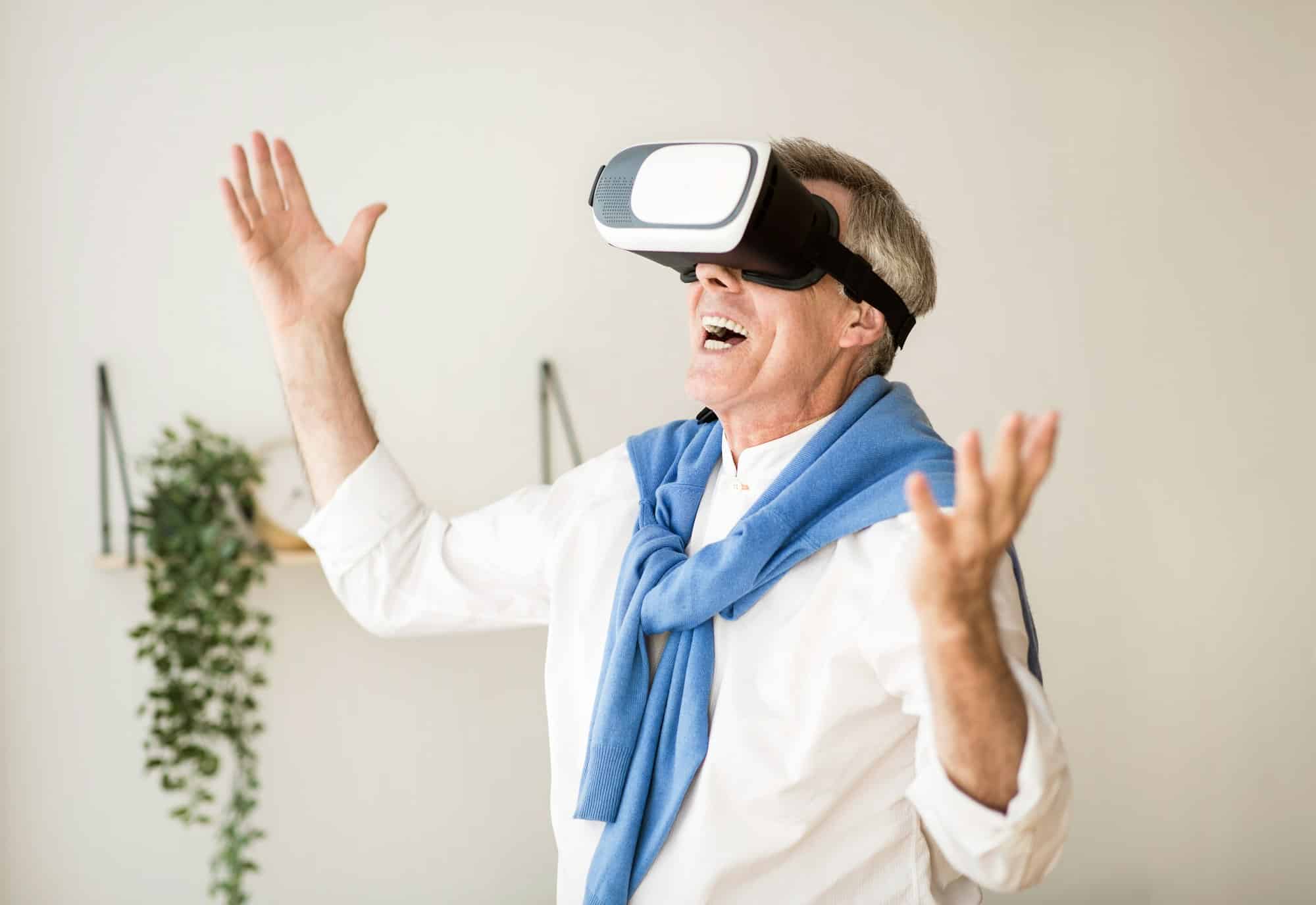Augmented Reality (AR) is reshaping how we interact with our smartphones, offering immersive experiences in gaming, shopping, and education. Maximizing these experiences requires the right tools and settings. This guide reveals practical tips to enhance your smartphone’s AR capabilities, ensuring you get the most out of this innovative technology. From app selection to optimization techniques, discover how to elevate your AR journey and transform everyday moments into extraordinary experiences. Embrace the future of interaction!
Understanding Augmented Reality and Its Smartphone Requirements
Augmented Reality (AR) is a technology that overlays digital information onto the real world, enhancing the user's perception of their environment. This immersive experience is achieved by integrating virtual elements into the physical world through devices like smartphones. To enjoy optimal AR experiences, smartphone compatibility is crucial.
Also to discover : How to Use Your Smartphone for Advanced Grocery Shopping with AI-Powered Recommendations?
Smartphones must meet certain requirements to effectively support AR technology. A powerful processor is essential as it handles the complex computations involved in rendering AR content. Additionally, a high-resolution display ensures that virtual elements appear clear and realistic.
Key features in smartphones that enhance AR capabilities include advanced cameras and sensors. These components are vital for tracking the environment and accurately placing digital objects within it. Moreover, a robust battery is necessary to sustain the power-intensive processes of AR applications.
Have you seen this : Enhancing Fitness Tracking Precision: Innovative Techniques for Smartwatch Users
In summary, while AR technology offers exciting possibilities, the smartphone's compatibility plays a pivotal role in delivering seamless and engaging experiences. Understanding these requirements helps users make informed decisions when selecting a device for AR applications.
Top Augmented Reality Applications for Smartphones
In the realm of Augmented Reality, various applications stand out for their innovative features and user-friendly interfaces. These apps cater to both entertainment and productivity needs, offering diverse mobile AR experiences.
Popular AR Applications and Features
- Pokémon GO: This app revolutionised mobile gaming with its location-based AR gameplay, allowing users to catch virtual creatures in real-world settings.
- IKEA Place: Perfect for home design enthusiasts, this app helps users visualise furniture in their space before purchase, enhancing the shopping experience.
- Snapchat: Known for its playful filters, Snapchat integrates AR to transform selfies into entertaining creations.
User Experience Comparison
Users often praise the best AR apps for their intuitive interfaces and seamless integration of digital elements into the real world. While Pokémon GO offers an engaging outdoor experience, IKEA Place focuses on practicality, assisting users in making informed purchasing decisions.
Recommendations
For entertainment, Pokémon GO and Snapchat are highly recommended due to their engaging and fun features. On the productivity side, IKEA Place stands out for its utility in home furnishing. These AR application reviews highlight the versatility and potential of AR technology in enhancing everyday activities.
Optimizing Smartphone Settings for Augmented Reality
To maximise your Augmented Reality (AR) experience, adjusting your smartphone settings is crucial. Begin by ensuring the AR configuration is optimised for enhanced performance. This involves enabling location services and camera permissions, as these are vital for accurate AR functioning. Additionally, calibrating sensors can improve object placement and interaction.
Battery life management is essential during AR usage, as AR applications can be power-intensive. To conserve energy, reduce screen brightness and close background apps. Activating battery saver mode can also extend usage time without significantly impacting performance.
Regular software updates are important for maintaining and enhancing AR capabilities. Updates often include improvements to AR frameworks and bug fixes, ensuring a smoother experience. Keeping your device's operating system and AR apps up-to-date ensures compatibility with the latest features and optimisations.
By fine-tuning these settings, users can enjoy a more seamless and immersive AR experience on their smartphones.
Hardware Accessories to Enhance AR Experiences
Exploring AR accessories can significantly enrich your augmented reality experiences. One of the most talked-about enhancements is AR glasses, which offer a hands-free, immersive way to interact with digital content. These glasses project virtual images directly into your field of view, allowing for a seamless blend of the real and digital worlds.
When considering smartphone enhancements, it's vital to evaluate the compatibility of these accessories with your device. Not all AR glasses are universally compatible, so checking the specifications and supported models is crucial. This ensures that the accessory will function optimally with your smartphone, providing a smooth and integrated AR experience.
User reviews often highlight the convenience and enhanced interaction that AR accessories provide. Popular options like the Nreal Light and Vuzix Blade are praised for their intuitive interfaces and ease of use. These devices are designed to work with a variety of smartphones, making them accessible to a broad audience.
Incorporating AR accessories into your setup can elevate your experience, offering new ways to engage with digital content and transforming how you interact with your environment.
Troubleshooting Common Augmented Reality Issues
When using AR applications, users may encounter several common problems that can hinder the experience. Device compatibility is often a primary concern, as not all smartphones are equipped to handle AR's demands. Ensure your device meets the necessary specifications, such as a powerful processor and advanced cameras.
Common AR Problems
- Inaccurate object placement: This can occur if the device's sensors are not calibrated correctly. Recalibrating the sensors or restarting the application can often resolve this issue.
- Lagging or freezing: Often due to insufficient processing power or memory. Closing background apps and ensuring adequate storage space can improve performance.
- Display issues: If virtual elements appear distorted, check your device's display settings and ensure the AR app is up-to-date.
Step-by-Step Troubleshooting Tips
- Restart the app: A simple restart can fix minor glitches.
- Update software: Ensure both your device's operating system and AR apps are current.
- Recalibrate sensors: Follow the app's instructions to properly recalibrate.
For further assistance, consult user forums or the app's support resources. These platforms can provide additional AR troubleshooting advice and solutions tailored to specific common AR problems.
Comparing Augmented Reality Features Across Smartphone Models
The evolution of smartphone comparison in terms of AR features reveals significant differences across models. Leading brands like Apple and Samsung often integrate advanced AR capabilities, offering superior device performance. These models typically feature powerful processors and high-resolution displays, enhancing the AR experience.
AR Capabilities in Leading Brands
-
Apple: Known for its seamless integration of hardware and software, Apple's devices often lead in AR innovation. The latest iPhones boast LiDAR scanners, improving depth perception and object placement.
-
Samsung: Offers robust AR features with its high-end Galaxy series. Equipped with multiple cameras and advanced sensors, these devices ensure precise AR interactions.
Budget vs Premium Devices
While premium models provide top-tier AR experiences, budget smartphones are improving. Brands like Xiaomi and OnePlus offer devices with decent AR capabilities at a lower price. However, they may lack the processing power and sensor quality found in premium models, impacting device performance.
User Testimonials
Users often highlight the smooth AR experience on premium devices, citing better device performance and accuracy. Budget device users appreciate the affordability but note occasional lags in AR applications. These testimonials underscore the importance of choosing the right smartphone for optimal AR functionality.
Future Trends in Augmented Reality for Smartphones
As the future of AR unfolds, smartphone integration is set to revolutionise user experiences. Emerging AR technology trends focus on enhancing realism and interaction. One notable trend is the development of next-gen smartphone features that support more sophisticated AR applications. These features include improved processors and advanced sensors, which will enable more complex and immersive AR environments.
Emerging AR Technology Trends
- 5G Connectivity: This will drastically reduce latency, allowing for smoother and more responsive AR interactions.
- AI Integration: Artificial Intelligence will enhance object recognition and tracking, making AR applications more intuitive and user-friendly.
- Wearable AR Devices: As smartphones evolve, they may integrate more seamlessly with AR wearables, expanding the scope of AR experiences.
Future Smartphone Developments
Predictions indicate that smartphones will continue to evolve with next-gen features such as foldable displays and enhanced battery life. These advancements will support prolonged AR usage and more dynamic content display.
Upcoming AR Applications
New AR applications are expected to impact various sectors, from education to healthcare, by providing interactive learning tools and virtual health consultations. As these technologies advance, users can anticipate more personalised and impactful AR experiences.






